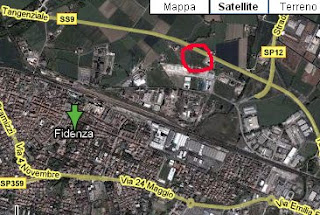Bicester survive? Bicester I read the book by Aldo Cazzullo, which also speaks to us. Title: Outlet Italy. Travel the country on sale , a metaphor certainly not exciting for the future.
I was struck by the fact that Bicester is also becoming famous for having one of these iperluoghi that become symbols of the sale, not only of goods but also of values. " Parallel worlds in which "everything becomes a commodity, including the relationship between people," where he performed "the market's most valuable assets: justice, love, time, last name, embryos, faith, culture; up to men, treated as objects just as dogs and SUVs are becoming more important than people. " Luca Mercalli
I heard on TV, Chetempochefa , repeatedly draw attention to the dangers of reckless economic growth. In the future, including climate changes and energy crisis, the system's ability to absorb the blows, to limit the damage, could diminish considerably. Therefore, you should give "priority to saving and energy efficiency, food production of short chain, arrest of the overbuilding of agricultural land which are our insurance for the future." Preserve the fertile land and stop a cement works and possible emergency exit, where survival itself becomes a problem.
I read an article with the title and eye very eloquent: "The future city. Burdett: "We like London." Interview / The famous English architect proposes that urban growth takes place only in the former industrial areas without touching the green "( La Repubblica, December 14, 2007).
I have in mind a fable I had heard on television a long time ago. You can get it as a game but it does reflect a lot.
We imagine a large reservoir from which we draw water every day. The first day a little bit, the second day a little 'more, and so on. Our use of the resource is growing and to be more precise increases in geometric progression.
is an easy game to do and is really impressive. For example, a geometric progression is a series of numbers like 1, 2, 4, 8, 16, 32, etc.. If we try to develop the calculations for 29 days, we realize that the result is breathtaking. The first day we drew 1 cubic meter of water, but our consumption has gone up in 29 days to more than 268 million cubic meters!
The best is still to come. We are quiet because we know that the reservoir was only half drained. But the question is: how long will it take to drain all? And the answer is astonished to leave: just one day leave us without water!
course, is only an allegory, and it is still to establish which is the real value of that "day": 10 years? Fifty? A century? To do that you should calculate
back the pace of growth and resource consumption, but in any case it is not difficult to see that the reasoning of Mercalli is right: we must not slow down, you have to stop, stop cement factory, preserve soil fertility, maybe for us but certainly for future generations.
Then, these readings and reflections, I have inevitably led to think about what happens in Bicester. If I enter via Togliatti, intersection the Via Emilia (Via XXIV Maggio) towards Vaio Ponte Ghiara, on the left, where there was once a year, now are there to the foot of the hills, new settlements and a large hospital. All these fertile lands have been strangled by a deluge of concrete and asphalt. If I take the direction of
Soragna up to the exit of the A1, until Outlet (from which these considerations have started) when I think of the one million cubic meters of concrete will leak on Bastelli, I have to ask: in the future will be a bit 'of agricultural land in the territory of Bicester? The urban expansion will continue or will stop in geometric progression, as is absolutely needs to happen right now?
I heard a commissioner who spoke of the future production plant Bastelli as a beautiful design, eco-friendly at high levels.
I heard another councilor that about too many trees felled or uprooted in the city, replied that Bicester is well above the legal parameters for the urban green.
I wonder if they're right?
I went back to Maureen Crozza mind that, quoting De Gasperi, remember that a good politician does not think the next election but to future generations.
Our administrators seem quiet. Who knows which of the two things they're thinking?
Photo 1: the urbanization of Bicester some forty years ago (the whole city was in the red line), when the population was more or less the same today
Photo 2: Bicester and its territory, as seen from the satellite (there are still a quarter of Europe and future settlements Bastelli).
 But where exactly all this flower 'eye? Consulting Google Maps seems to locate in the area circled in red near the ring road, in the two satellite photos.
But where exactly all this flower 'eye? Consulting Google Maps seems to locate in the area circled in red near the ring road, in the two satellite photos. 





